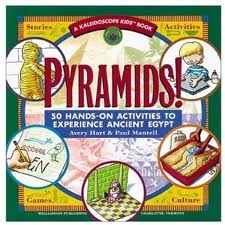Bring the following passages from Park’s A Long Walk to Water to life by making a few hand-on projects.
“Salva was amazed by what he saw in the fishing community. It was the first place in their weeks of walking that there was an abundance of food. The villagers ate a lot of fish, of course, and hippo and crocodile meat as well. But even more impressive were the number of crops they grew: cassava, sugar cane, yams…It was easy to grow food when there was a whole river to water the crops! (47)
And…
“Every time Salva delivered a load of reeds, he would pause for a few moments to admire the skills of the boat builders. The long reeds were laid out in neat bunches. Each end of a bunch would be tied together tightly. Then the bunch of reeds was pulled apart in the middle to from a hollow, and the two sides were tied all along their length to make a basic boat shape…Salva watched, fascinated, as little by little the curve of a prow and low sides grew from the piles of reeds. (44)
 Instead of merely watching, as Salva did, let your kids create the scene. Pages 31 through 35 of Pyramids! 50 Hands-on Activities to Experience Ancient Egypt offer suggested activities to recreate these passages.
Instead of merely watching, as Salva did, let your kids create the scene. Pages 31 through 35 of Pyramids! 50 Hands-on Activities to Experience Ancient Egypt offer suggested activities to recreate these passages.
Kids can build the lush banks of the Nile River using a kitty litter pan or a pie tin, sand, potting soil, foil, parakeet seed, and a nice collection of rocks and pebbles. Make the Nile River a little bit treacherous by adding some blood-thirsty plastic crocodiles in the water. Yikes!
And for the reed boats, all that is needed is a fistful of dried grass tied together at each end with some thin string.
Simple things to dramatize these words… Finally, the boats pulled up to an island in the middle of the river. This was where the fishermen of the Nile lived and worked (47)…and where your children learn and grow.










